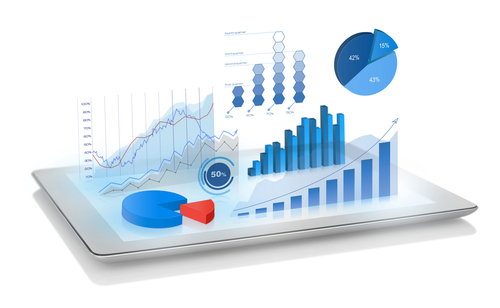Empowering HR with data visualisation | Samuel Conway, Co-Founder & CEO, Zegami
- 7 Min Read
In this installment of our Tech Founders series, Samuel Conway, Co-Founder & CEO, Zegami, elucidates upon the power improved data visualisation holds for HR and people leaders, and the revolutions to expect from the world of HR technology in the very near future.
- Author: Michael Hocking
- Date published: Aug 7, 2019
- Categories

What is the true potential of HR and how can technology help us to achieve it?
In this installment of our Tech Founders series, Samuel Conway, Co-Founder & CEO, Zegami, elucidates upon the power improved data visualisation holds for HR and people leaders, and the revolutions to expect from the world of HR technology in the very near future.

What is Zegami?
Zegami is a Visual Data Exploration platform that enables businesses to recognise patterns quickly, analyse information, and find hidden insights by allowing users to search, sort, filter, group and analyse large collections of images and data simply and intuitively.
Launched out of Oxford University in 2016 by its three founders, Samuel Conway, Roger Noble and Stephen Taylor, Zegami is now working with commercial partners from Livetiles and Microsoft to challenge the way organisations manage visual data. They are currently exploring new ideas and making new discoveries for 35 clients and counting, across an ever-growing variety of sectors.
In a world awash with data, the battle for businesses and organisations isn’t the acquisition of data, but their data maturity – the capacity to understand it and utilise it. Zegami transforms how people explore incomprehensible datasets through an easy, fluid visual interface, which all employees can use. Our Visual Data Exploration tool allows them to explore data visually and create powerful, insightful, persuasive infographics which highlight opportunities to improve and optimise processes and strategies. All this without a large investment in Business Intelligence teams and software.
Zegami is unique because it easily works with both structured and unstructured data, from multiple sources, from images to documents and APIs to video. Based on Oxford University research, our technology is helping organisations in many sectors realise the potential of their data, including: HR, research, and manufacturing.
Our platform is used by researchers at Oxford University and other institutions to display and catalogue their complex datasets. HR companies including InnovaSystems and SDWorkx now have Zegami fully integrated into their candidate management systems, allowing them to generate leads and match candidates at pace with simplicity. Siemens and numerous other tech firms are using Zegami to manage their manufacturing documentation, with Siemens using the platform to manage its gas turbine manufacturing process.
Ultimately, Zegami is sector agnostic. By enabling organisations to understand and utilise their data we are driving data maturity, and this will disrupt the status quo in every sector. If an organisation is lost in data, we help them navigate it and apply it.
Why was it necessary to create Zegami?
I think it’s fair to say these days that we are increasingly being called to make data driven decisions in all aspects of our professional lives. In his now famous quote Peter Drucker said that “If you can’t measure it, you can’t improve it”. However, collecting, processing and then understanding all the available data is hugely time consuming and can easily overwhelm non-technical decision makers.
It’s a problem that we first came across when working with our clients at a consultancy that specialised in business process improvement. We consistency saw the same or similar problems repeated over and over; they had lots of data, but the tools available to process it were overly complex. This leads to what we call an “analysis bottleneck”, where an organisation must then rely on developers, analysts and data scientists to turn their data into something more meaningful. Because of this, it could be said that an organisation can only move as fast as its slowest analyst.
Zegami aims to change this paradigm, by enabling key decision makers to be able to easily work with large amounts of data, from multiple sources. The kind of data we are talking about includes Databases, HR, Payroll, engagement surveys and even documents. A significant amount of all the data that is currently being generated is in separate silos and the real value is in being able to connect it all together to make sense of it all.
Why is HR technology crucial to the success of a business?
HR technology is reaching a point where it can create value in many ways, not just by the cost-saving mandate traditionally assigned to HR. The right tech can generate “ROI” to make it worth the investment, by proactively creating value, driving productivity, enhancing engagement, optimizing spend, and making better high-value strategic decisions that involve your workforce.
In short, HR technology is crucial because it enables valuable decisions around the work force. This sounds obvious and intuitive, but there are so many HR solutions where the ROI is hard to see that it warrants articulating. HR technology encompasses solutions that will help you recruit and retain the right people in your organization, engage your workforce in a way that drives productivity, save costs on compensation and benefits, and create an equitable and fair workplace. In short, tech will either create competitive value in its own right, giving you an economic advantage over your peers, or it will lead to insights your competitors will find, becoming a “price of admission” of doing business, in order to keep up. Zegami HR is a solution that helps find these insights in an intuitive way.
How can an organization most effectively implement new HR technology?
Effective implementation of HR technology enables discussion and better decisions on how responsibilities, resources and access are shared among HR functions and people. Does a new tech support the Recruiting function? Or Benefits, Diversity & Inclusion, Compensation, Training, or any other (or all of them)? Determine this first, then identify the people who will be using the solution. Often, organizations face the conundrum that HR professionals don’t always have advanced technical knowledge, and technical people do not have a deep understanding of complex HR concepts. Overlap is needed to ensure HR organizations use the technology appropriately to solve the real problems.
Analytics, for example, is a new sub-function in HR at some forward-looking companies; and there is new technology to support that function (such as Zegami). Analytics can stand as a separate HR team of data scientists, or they can split up the team and divide them amongst the various existing HR sub-functions; or indeed keep Analytics as a separate function altogether, completely outside of HR. Making these decisions about who uses the technology is crucial. After all, having the wrong tools or bad data can be bad; but perhaps the worst case would be investing in the right tech tools and having the best data, yet having the wrong people analyzing it.
What do you think is the biggest challenge affecting organisations today?
With the changing of needs of the modern workforce, it is increasingly important for employers to better engage with employees and to proactively monitor retention. Staff turnover can have a huge effect not only on hiring budgets, but also on the bottom line from project delays and missed opportunity costs.
HR has been traditionally been considered a cost centre, but there is a cultural shift happening, that HR is becoming a growth driver of the organisation, using data in more creative ways to understand, motivate and optimise the workforce.
The way the HR needs to operate and think is naturally intuitive and subjective in understanding the people in the workforce. Solving HR problems requires judgement and patience. Analysing HR data needs understanding of incentives and motivation and can reduce this subjectivity.
Which emerging technologies do you think will transform HR in the future?
It has to be AI. The hype around Artificial Intelligence has been dominating the conversation for a few years now, but it’s only now that we can start to see it permeating the workforce in a meaningful way. AI has the potential to find that needle in the haystack based on patterns it learnt from in the past. The result is huge time savings to better arm and inform a HR professional with the data they need to make those data driven decisions.
This is enabled by the growth and proliferation of APIs within the HR space, enabling software like Zegami to take data from multiple sources (Workday, PeopleSoft, SAP, etc.) to create insights about behaviour and motivations otherwise impossible.
It’s what’s called Augmented Intelligence, in that AI can combines automation while still leveraging human insight and pattern recognition to produce the best results.







